We recently compared the new AMD Ryzen 7 5800X3D and Intel Core i9-12900K flagship head to head in 40 games and found that overall they offer a similar gaming experience. Of course, they traded blows, but overall much of a muchness. Still, there were loads of interesting data points and this motivated us to include the original 5800X in a new comparison, allowing us to see where that massive L3 cache can help out.
On the menu today is another 40 game benchmark — actually 41, because we’ve included one more title in the form of Microsoft Flight Simulator. This time it’s the 5800X3D against its spiritual predecessor, the 5800X, tested across three resolutions using the RTX 3090 Ti.
As of writing, the 5800X3D has yet to go on sale, so we’ve still to discover just how many of these things AMD has to sell, and at what price they’ll be available. AMD says $450, so we’ll have to go with that for now.
When compared to the Core i9-12900K, the 5800X3D is exceptionally good value (at least for gaming), priced almost 30% lower and then you have the memory cost which is significantly less assuming you want to unlock the full potential of the Core i9 part. You can pair the 12900K with DDR4 memory, but then it will still cost more than the 5800X3D and will be slower.
So when it comes to «ultimate gaming performance,» Intel and AMD are currently tied, but the 5800X3D is far more affordable, more power efficient and easier to cool, making it a more practical solution for a pure-gaming build. But what about for those of you who want high-end gaming performance, but aren’t interested in paying a premium for the «ultimate» gaming?
From Intel, the Core i7-12700K is pretty great, and that’s the comparison we’ll be going for next. But for today we have AMD’s own 5800X, which is now selling for $340, and the new R7 5700X at $290. We’re only including the 5800X in this testing, but with a mere 2% frequency advantage over the 5700X, you can safely assume this performance is also achievable with the cheaper Ryzen 7 part.
The goal of today’s benchmark session will be to measure where the 3D V-Cache boosts gaming performance, and to see if it’s worth spending the extra 32-55% on the 5800X3D.
Both AMD CPUs were tested using DDR4-3800 CL16 memory with the MSI X570S Carbon Max WiFi. This is the fastest memory we can use with the Ryzen 7, while running at a 1:1 ratio with the FCLK. We’ve enabled Resizable BAR using the GeForce RTX 3090 Ti. Now onto the testing…
Starting with Valorant, we find a solid performance uplift from the 5800X3D. An 18% increase for the average frame rate at 1080p and a 24% boost to 1% slows and similar figures were also seen at then the 5800X3D will probably appeal to you.
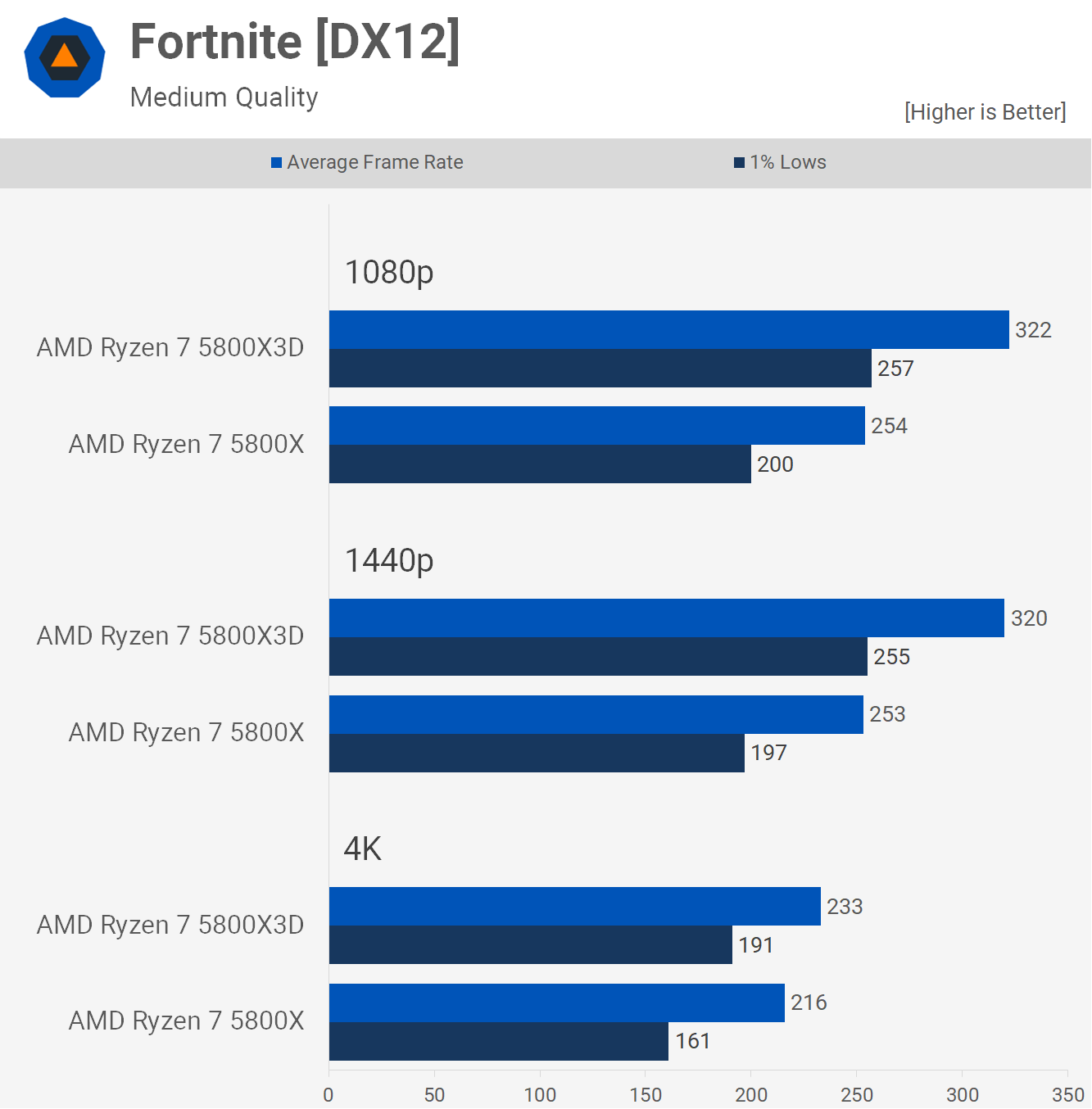
Even at 4K, the 5800X3D was up to 19% faster which is remarkable and although most competitive players target 1080p, or maybe 1440p, I certainly appreciate the boost at 4K as this is where I play Fortnite.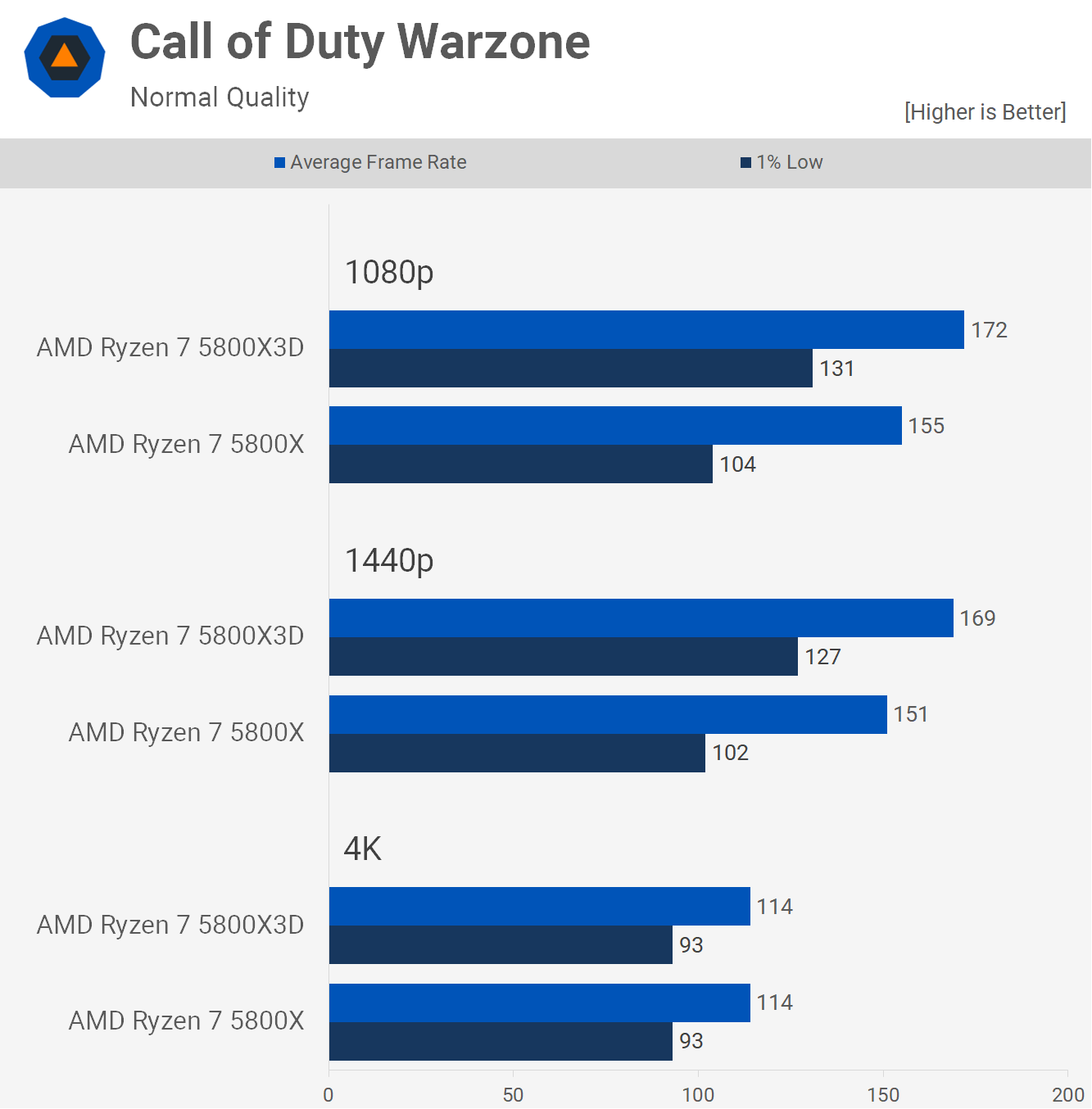

We’re even seeing a massive 30% improvement to 1% lows at 4K, so the 5800X3D is much faster than the 5800X across the board in this title, suggesting that this is a very cache sensitive game.
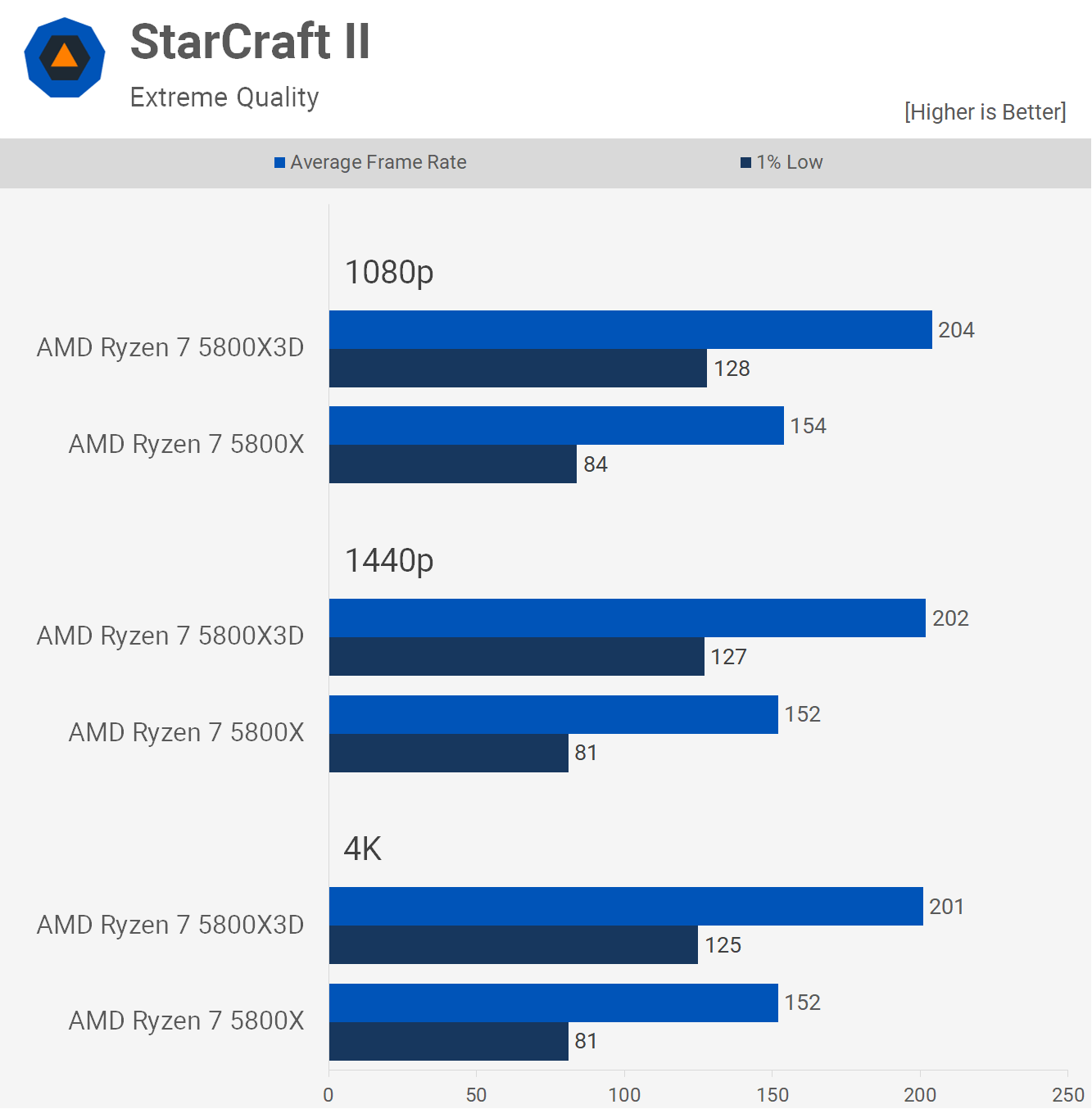
Although the 5800X was quite capable, you will notice the huge improvement with the 5800X3D. This massive margin was also seen at 1440p and even 4K, so a big improvement with 3D V-Cache for sure.
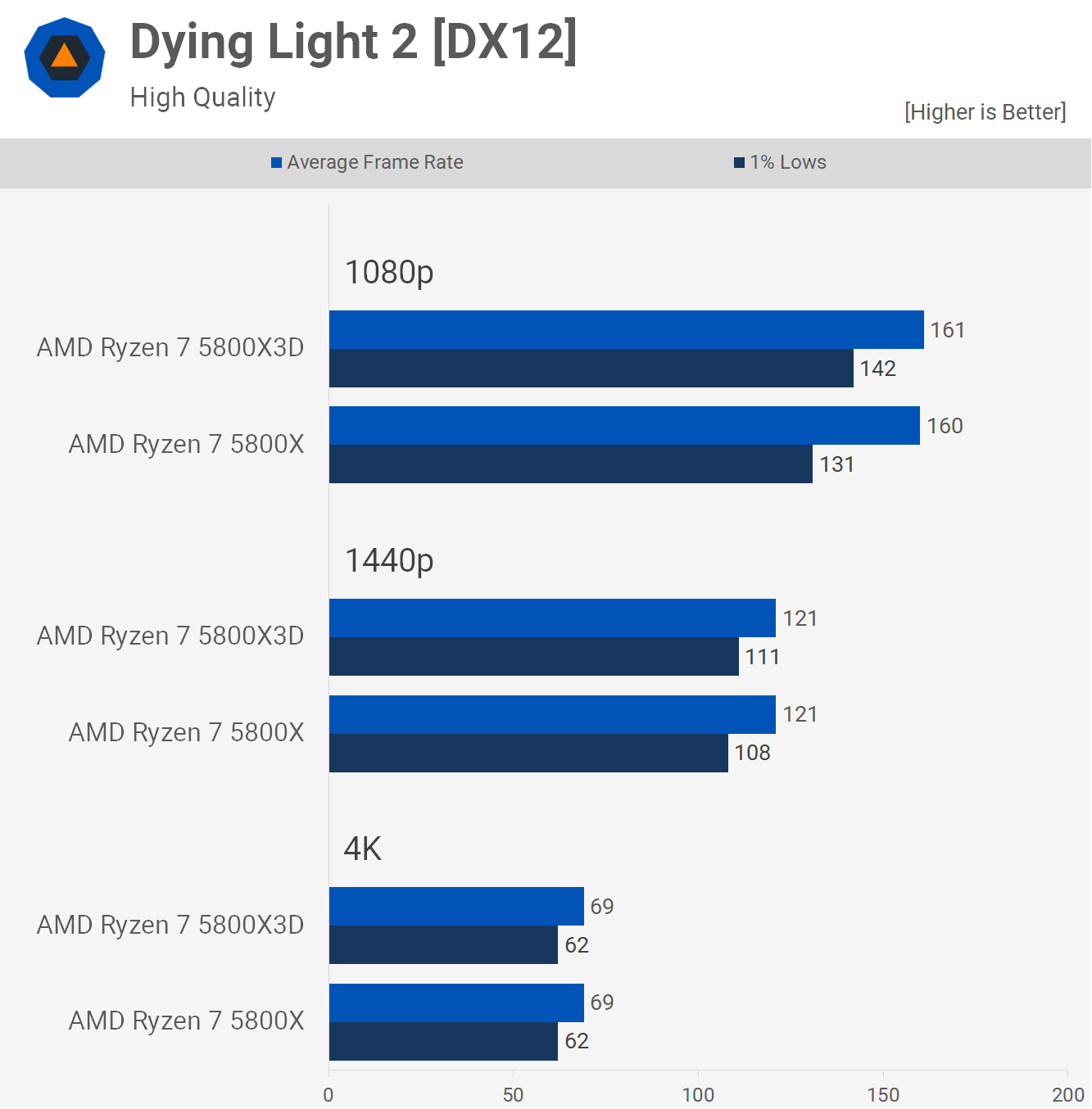

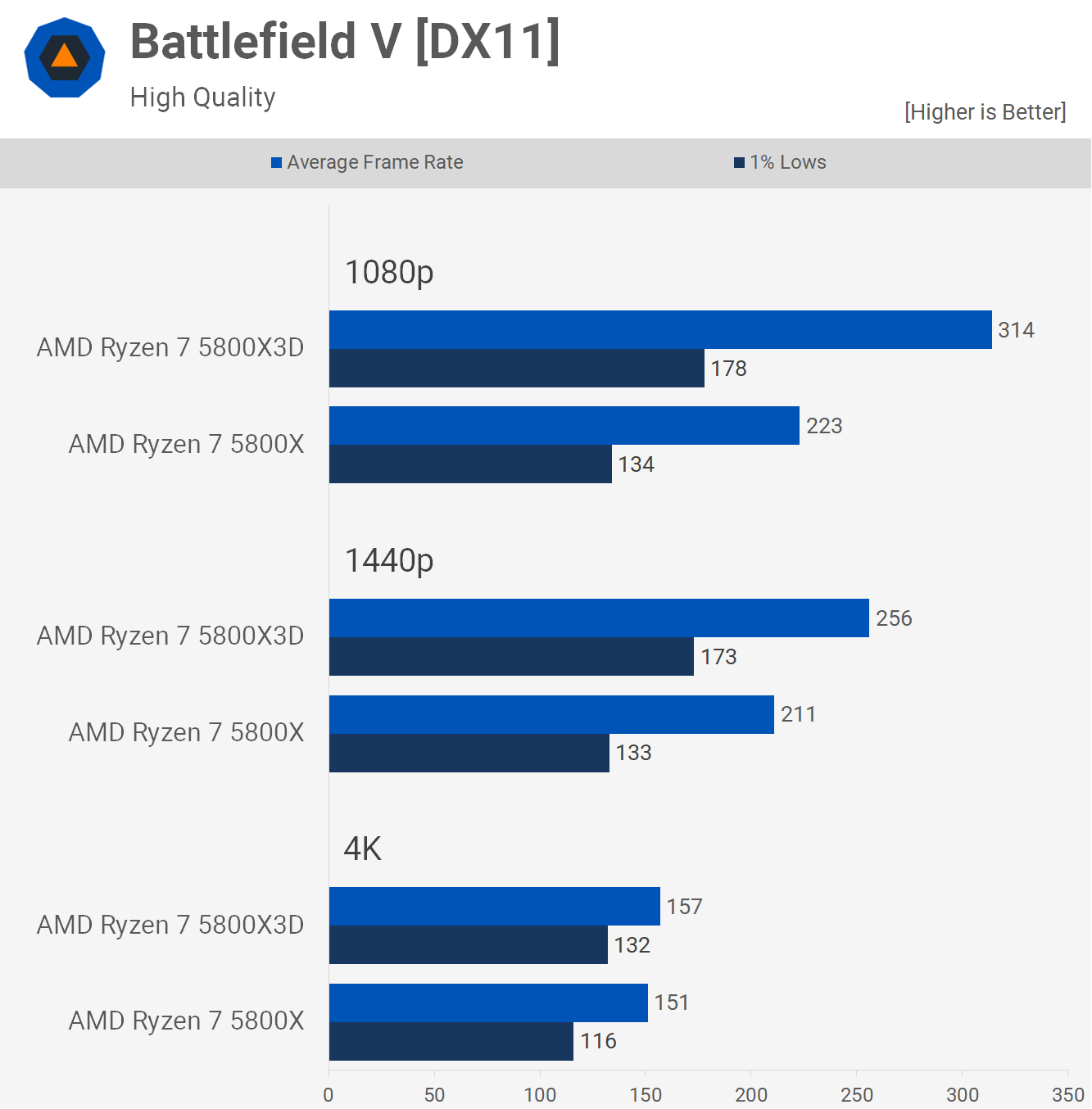

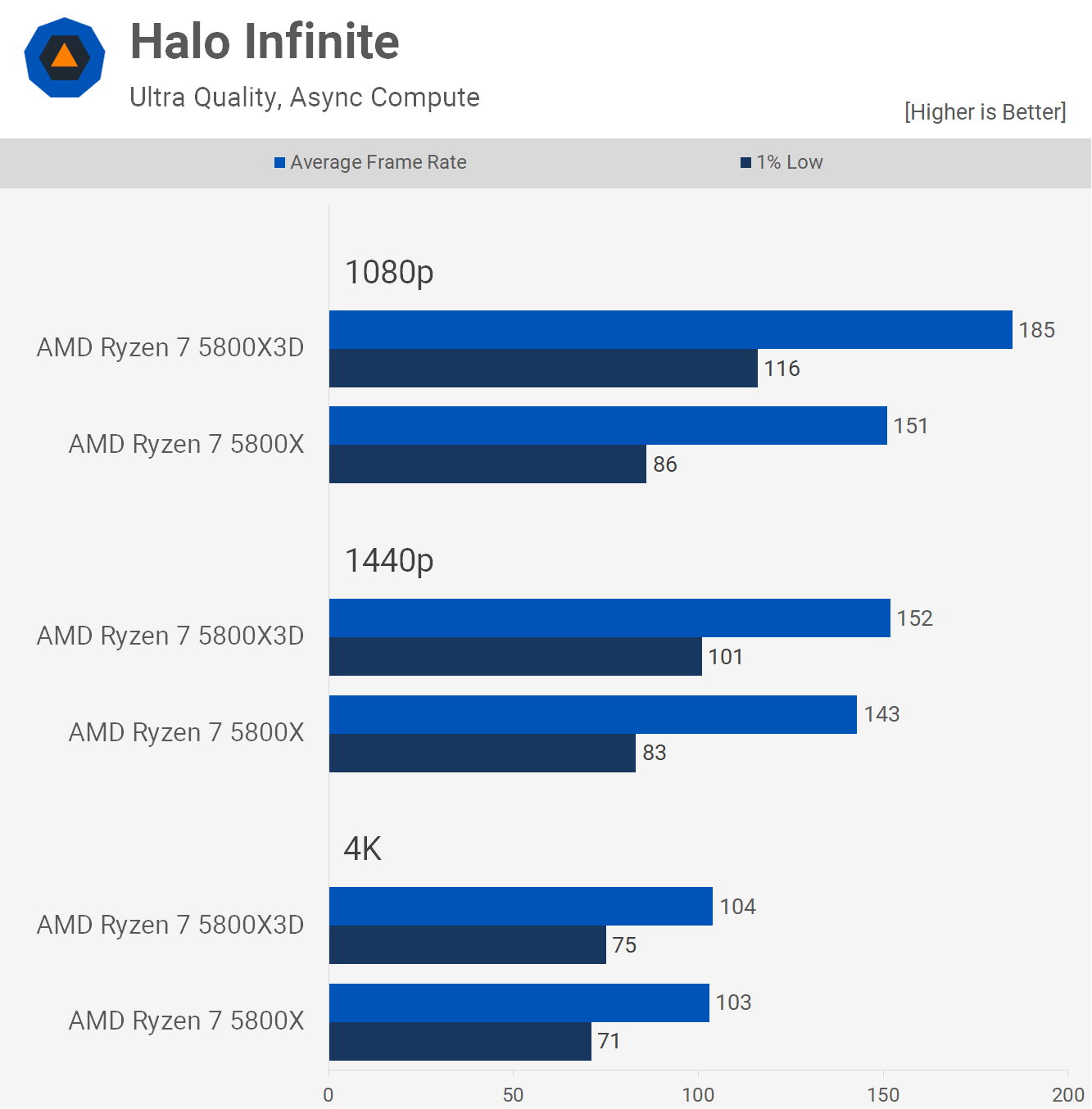

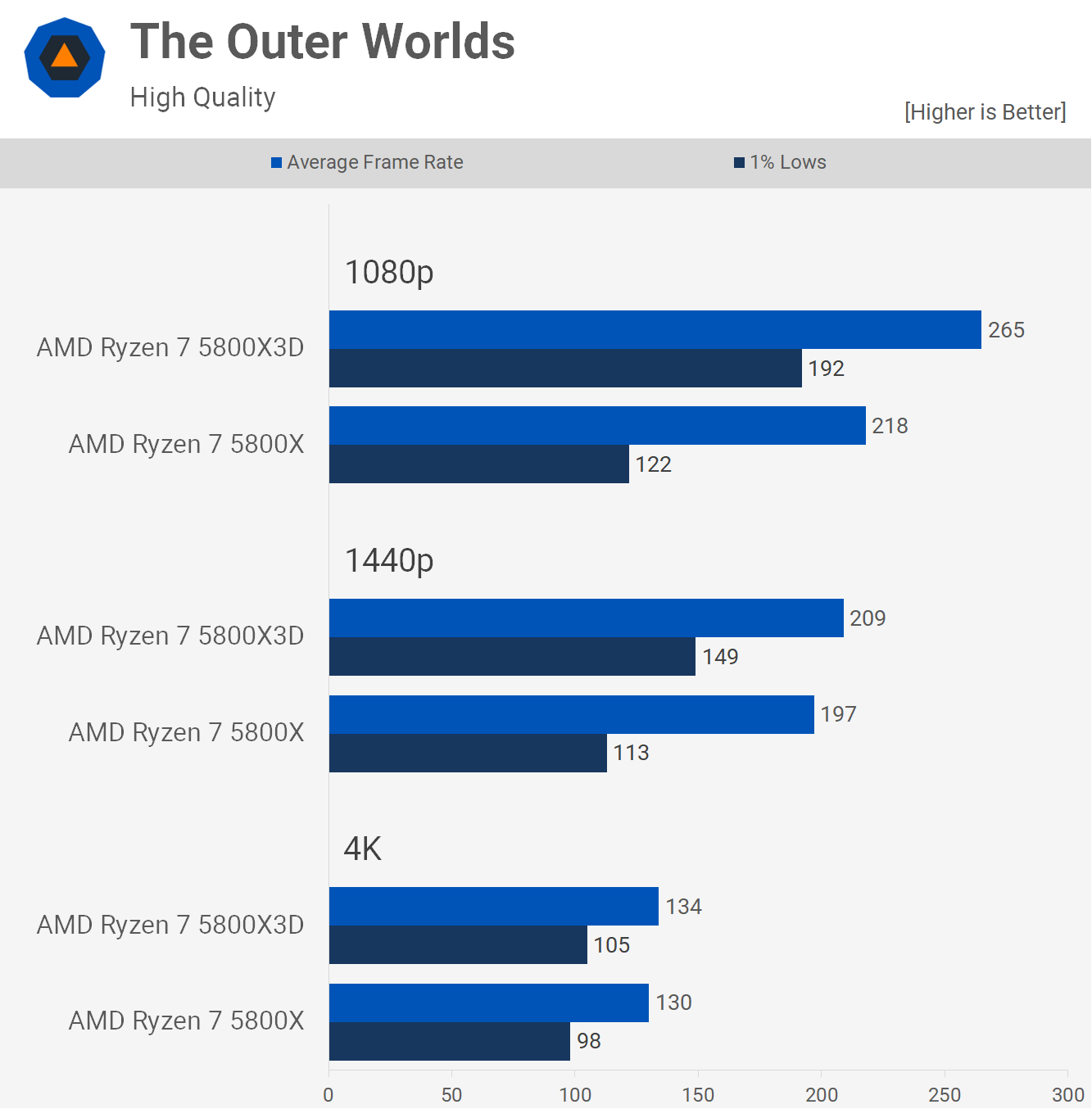
At 1080p the 1% lows were improved by an incredible 57% margin and although the uplift to the average frame rate was less extreme, a 22% boost is still impressive. The margins shrink at 1440p and are almost entirely eliminated at 4K.

We tried every suggestion we came across to fix this issue, but no joy. I simply cannot log into my account on our Intel test system. We went to Twitter with this issue and Paul Alcorn from Tom’s Hardware said they’ve had the same issue for months now and have been unable to find a solution. So for now we won’t be able to provide any Intel results, but here is how the 5800X3D and 5800X compare.
We’re looking at a 21-23% performance increase at 1080p with up to an 18% boost seen at 1440p before running into a hard GPU bottleneck at 4K.
We just looked at a little over a dozen of the games tested, but with 41 in total, there’s a lot more data to go over. So let’s take a look at the breakdown graphs covering the 1080p, 1440p and 4K resolutions.
At 1080p, the Ryzen 5 5800X3D delivered an average 15% performance bump over the original 5800X, which is impressive and inline with AMD’s claims. Out of the 41 titles, just 10 saw performance gains of 5% or less, which we deem insignificant.
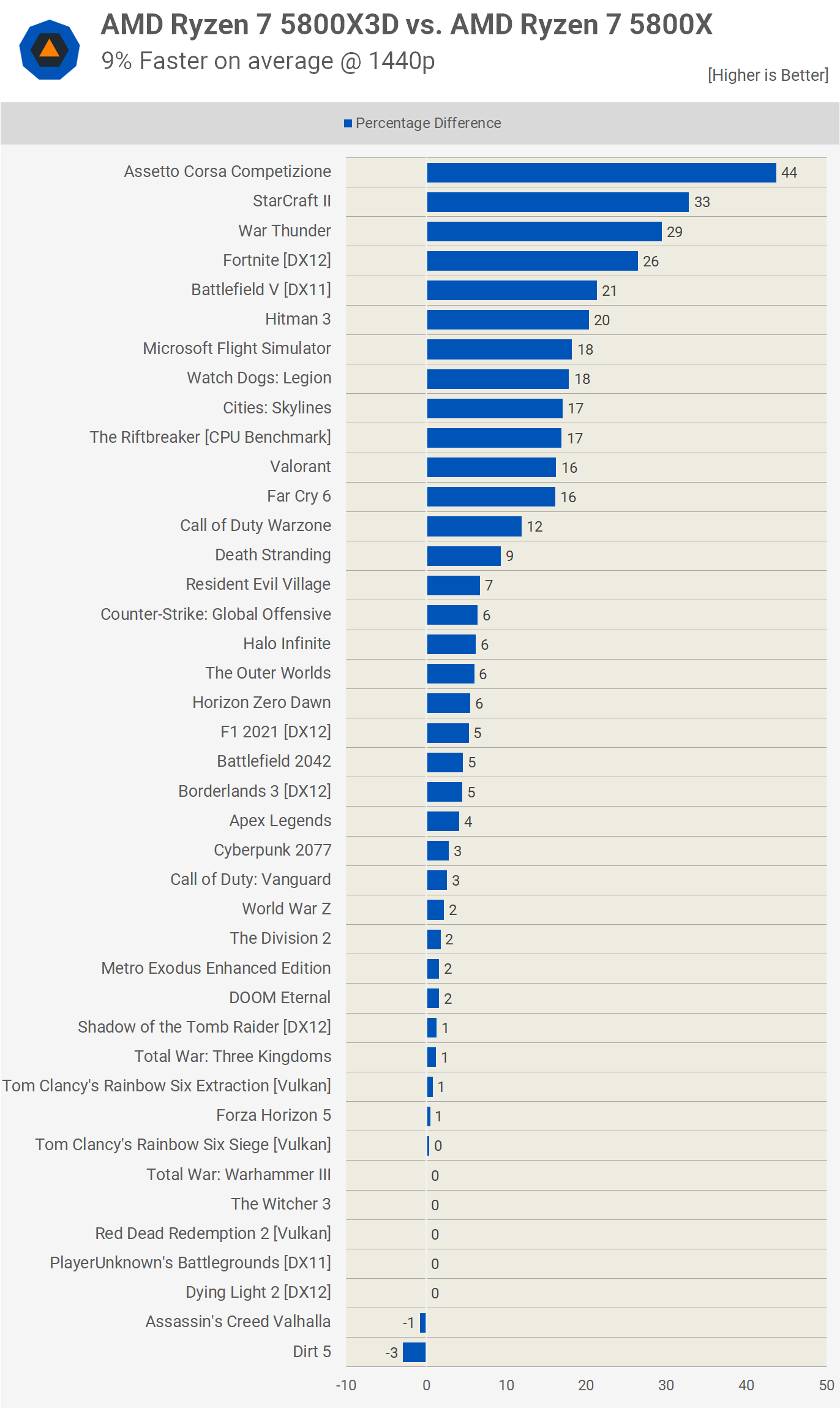

Valorant isn’t as CPU bound, but it doesn’t push the graphics card very hard, shifting the limitation more towards the CPU. For the rest of the games though, we’re mostly looking at GPU limited performance.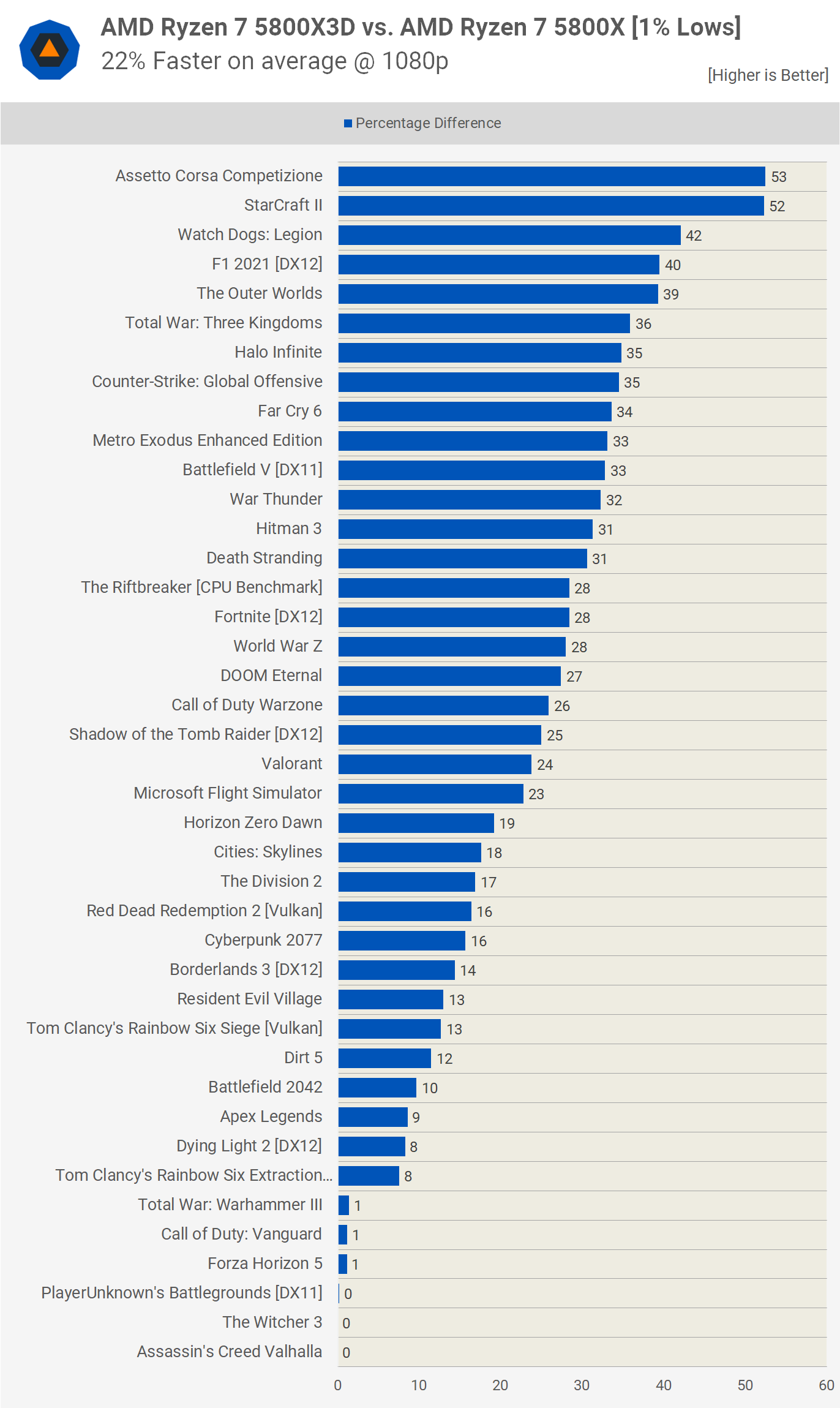
We observed impressive gains from the Ryzen 7 5800X3D over the original 5800X, it’s simply a much better gaming CPU. But is it worth paying more than a 30% premium for, or a little over 50% when compared to the new 5700X? That will depend on the games you’re playing, how you’re playing them, and what kind of performance you’re after.
If the goal is to secure the best gaming performance possible, then by all means, the 5800X3D is it. Either that, or the Core i9-12900K, though you’ll have to spend a lot more money on the Intel side.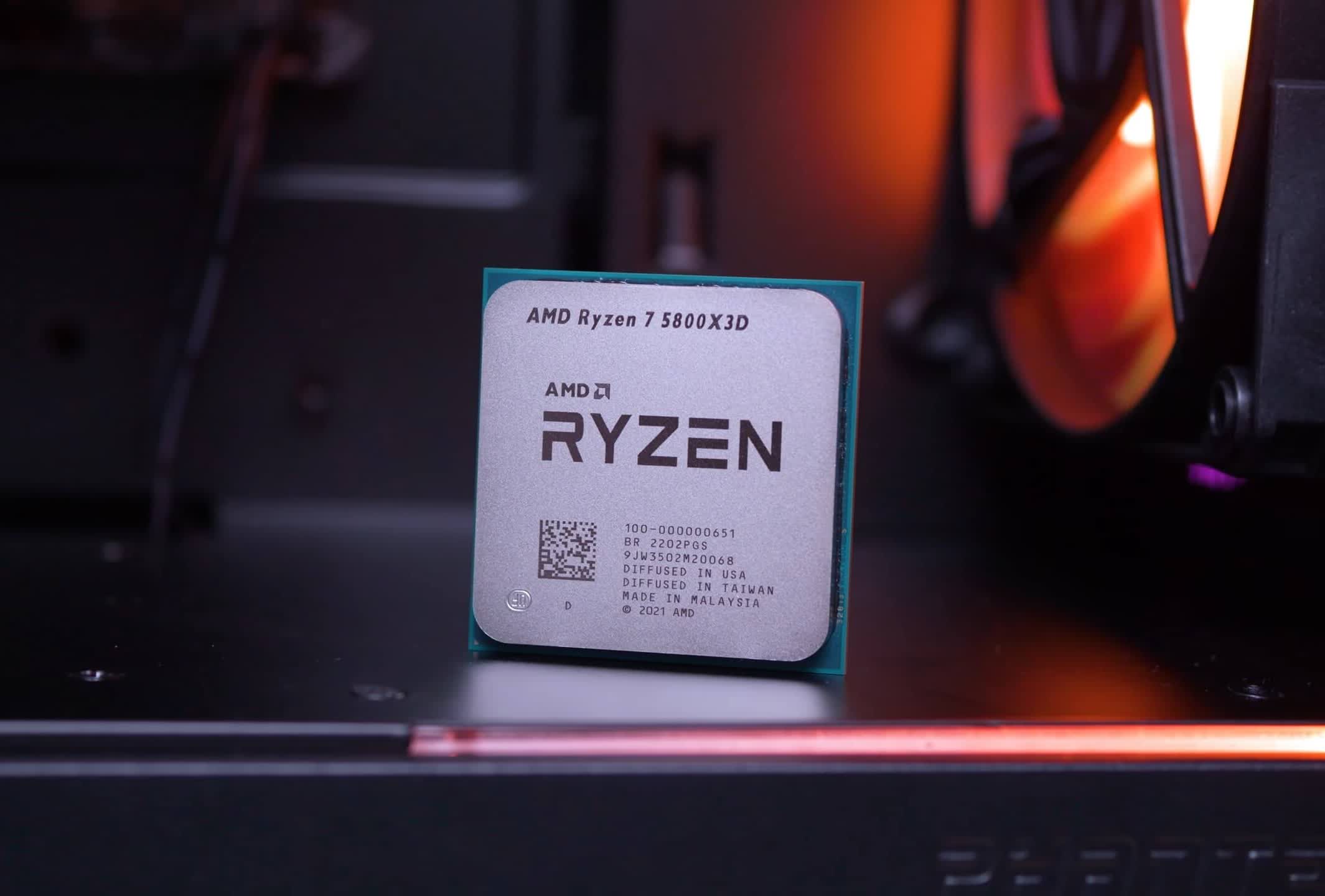
If you’re playing games such as StarCraft II, Watch Dogs Legion, ACC, F1 2021, Battlefield V and other titles where the performance jump was significant, and you’re after more performance than the 5800X can deliver, then the 5800X3D will be the obvious choice. But, if you don’t have the GPU power to take advantage of that extra headroom, or won’t be playing at lower quality settings, then the 5800X3D won’t be any faster than the 5800X for the most part — or the cheaper 5700X for that matter.
Conversely, if you want the maximum bang for your buck in a PC gaming system, the 5800X3D is not the way to go. For that, the Ryzen 7 5700X or Core i7-12700F should be your top choices. Lately we’ve been recommending the Core i7, but we’ll take a better look at the 5700X soon.
The 5800X3D is an impressive gaming CPU and it demonstrates just how many options AMD now has available to make their CPUs a lot faster for particular tasks. That won’t make it the best value, but for a small premium AMD is delivering up to 50% more performance with 15-22% more on average depending on the metric/game you look at.
How impressive of an achievement will ultimately depend on pricing and availability, something we should have a good handle on the coming weeks (based on what we’ve been hearing, it doesn’t sound too promising). For now, that’s going to do it for this comparison, coming up next we’ll compare the 12700KF against the 5800X3D and 5800X to determine which brand offers the best value high-end CPU for gamers.
TECHSPOT : Tech Enthusiasts, Power Users, Gamers
TechSpot is a registered trademark. About Us Ethics Statement Terms of Use Privacy Policy Change Ad Consent Advertise
© 2022 TechSpot, Inc. All Rights Reserved.












![[Updated] Fortnite 'crashing on PC' after Chapter 3 Season 2 update, issue acknowledged – PiunikaWeb](https://axxess.ar/wp-content/uploads/2022/03/wp-header-logo-2589-100x70.png)